Mastering Spelling: 6 Essential Rules Every Student Should Know

As technology advances and tools like iPads become common in classrooms, students increasingly question the importance of learning spelling. After all, platforms like Google Docs offer built-in spell-check features. So, the question arises: Why bother learning to spell?
Proficiency in spelling is a cornerstone of effective writing. While spell check is a handy tool for catching misspelt words, it currently falls short in detecting contextual errors. Understanding spelling rules and patterns in the English language offers many benefits. One of the most significant advantages is the boost in confidence it provides. When children feel uncertain about their spelling abilities, they may hesitate to write and even feel embarrassed, especially in group settings where others can observe their spelling struggles. Moreover, as adults, there are numerous situations where the ability to write by hand remains essential.
The following six spelling rules provide a solid foundation for understanding English orthography and are helpful for learners to grasp early in their spelling education.
1. Silent E Rule
The silent-e rule is the most useful as it helps identify which vowels are long and which are short and so when to change the pronunciation of a word.
Many words follow the pattern of a vowel followed by a consonant and then a silent “e.”
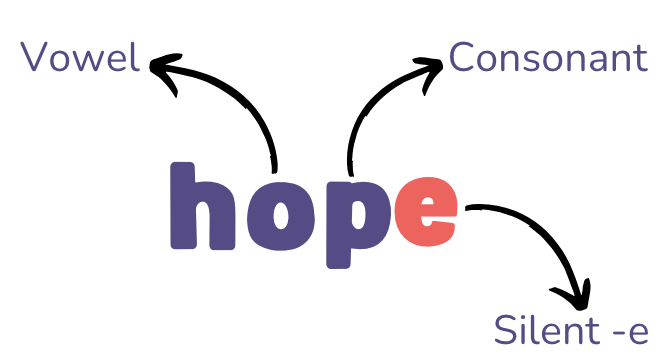
The letter “-e” at the end is silent but it’s significant because it alters the pronunciation of the vowel before it.
When you see a silent “-e” at the end of a word, it means that the vowel before it is pronounced as a long vowel sound.
When a word has one consonant as the last letter, the vowel makes a short vowel sound.
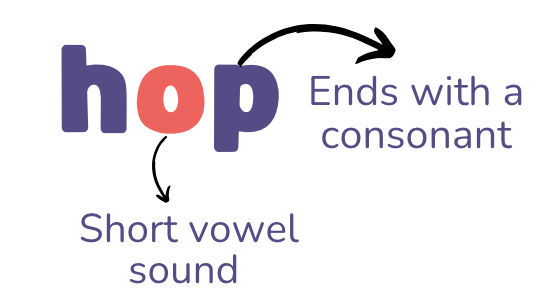
Words with only one vowel and that end in a consonant are called “closed syllables”.
In closed syllables, the vowel often makes a short vowel sound. Examples include “cat,” “bed,” “sit,” “hop,” and “cup.”
2. The Doubling Rule
The doubling rule tells you when to double a consonant when wanting to add a suffix to a word.
Double the consonant if:
- You want to add a suffix that begins with a vowel: -ing, -ed, -er, -est, -y, -ish
- The base word ends in a consonant
- The letter before the consonant is a single vowel
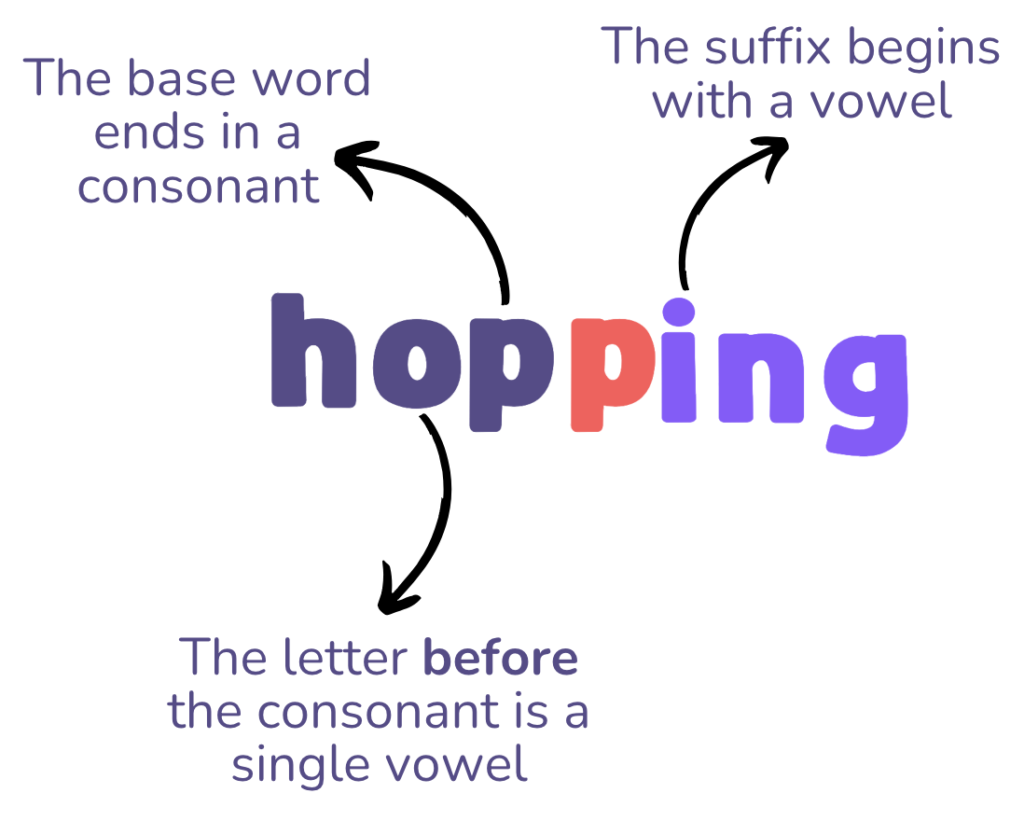
3. I Before E, Except After C Rule
The mnemonic device “I before E, except after C” helps remember a specific spelling pattern in English. While there are exceptions to many spelling rules in English, this particular rule serves as a helpful guideline: in most cases, the letter “i” precedes “e,” except when there is a “c” before it.
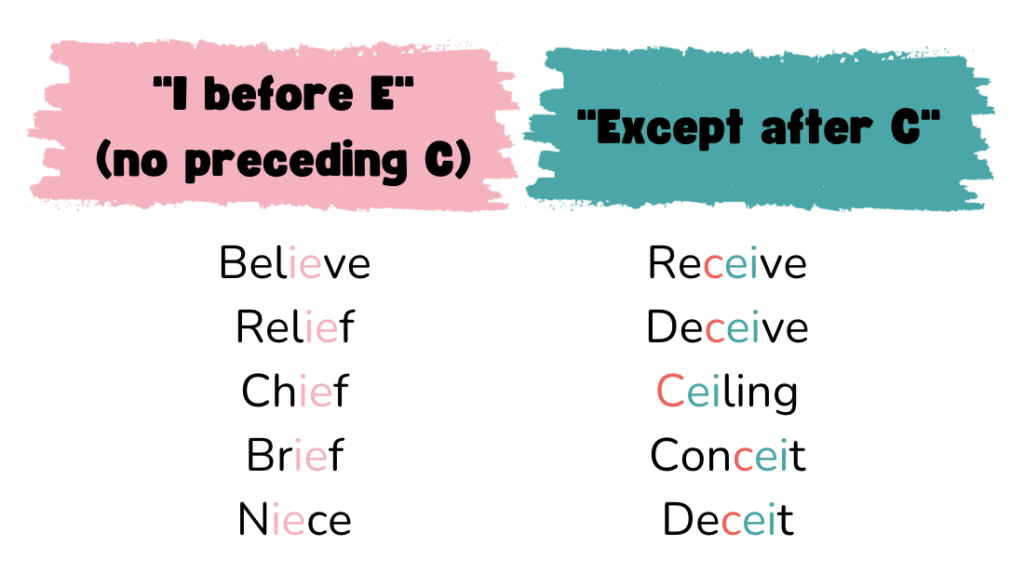
4. Silent Letter Patterns
In English, many words feature silent letters, where certain letters are not pronounced when spoken. As children learn to read, they gradually encounter more words and start to assimilate irregular spellings. However, explicitly teaching some common silent letter patterns can greatly benefit younger children learning to read and write.
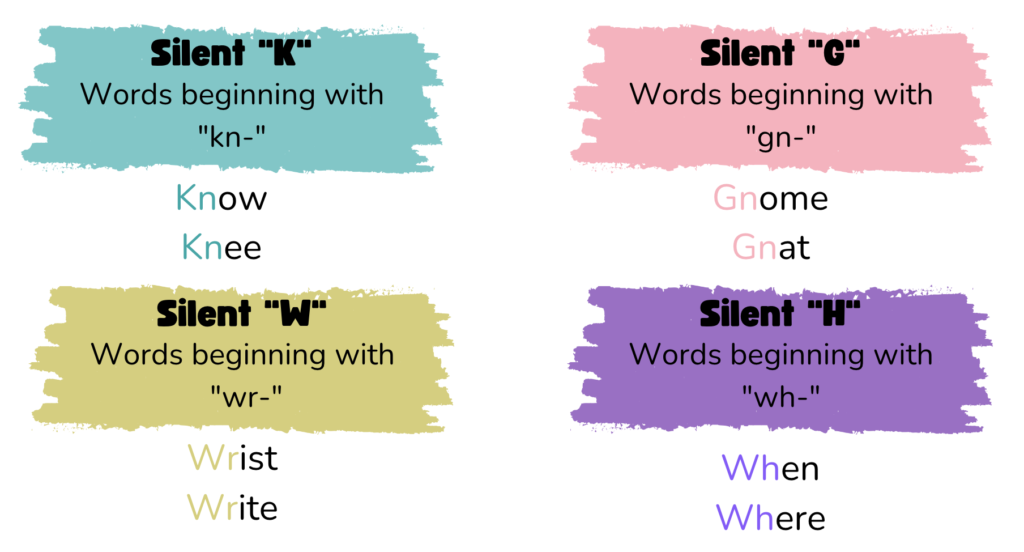
5. The FLOSS Rule
As with the doubling rule, the FLOSS rule can help you know when to double the final consonant when wanting to add a suffix.
Double the final consonant if:
- You want to add a suffix
- It is a one-syllable word
- If the word ends in f, l, s, or z
- And if there is a short vowel before the
f, l, s, or z
The “O” in FLOSS lets you know that the final consonant doubling applies to words with a short vowel sound before the final consonant.
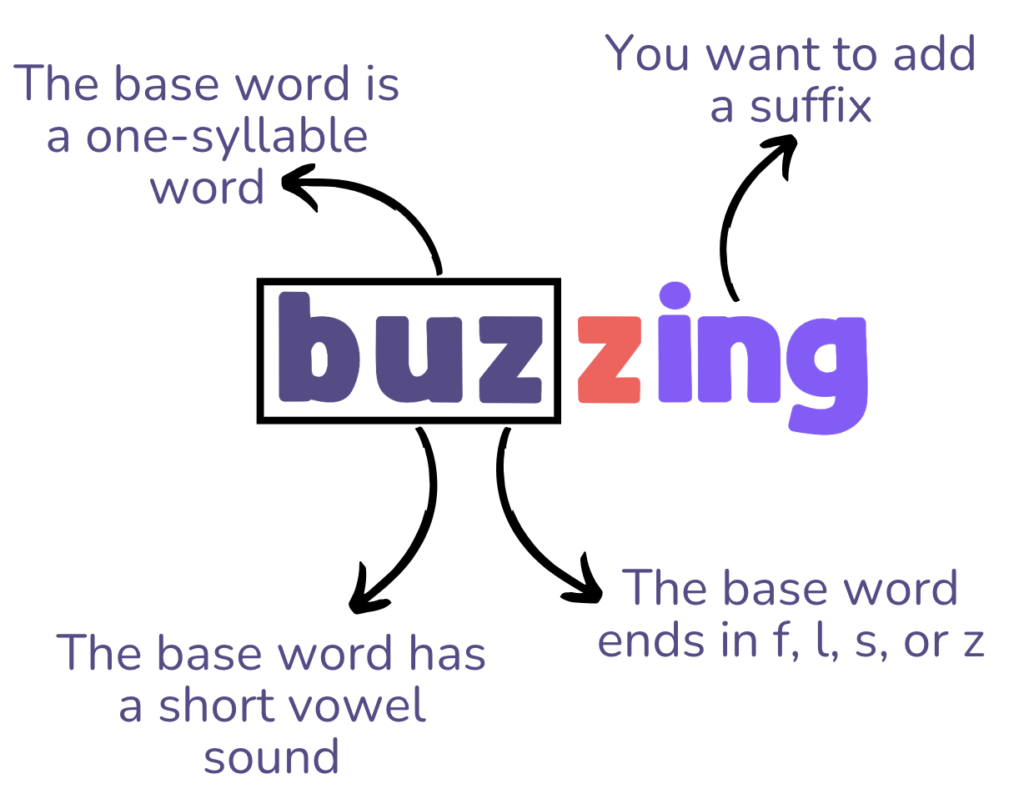
6. “c”, “k” and “c/k” Rules
When discussing sounds, linguists use symbols or notations to denote specific sounds within words to help with pronunciation. For instance, the notation /k/ signifies the “k” sound found in words like “cat” or “kite.” The letter “c” can also be produced as an /s/ sound, as seen in words like “ceiling.”
Understanding when to use “c”, “k”, or “ck” in spelling involves several elements, which should be taught individually as it can become confusing.
- The /k/ sound can be represented by either “c” or “k”
- Words starting with “k” are typically followed by an “e” or “i,” as in “Kent” or “kit.”
- Words ending in “ck” usually have one syllable, such as “sock” or “pack.”
- Words ending in “c” often have two or more syllables, like “tactic” or “picnic.”
Spelling in English presents unique challenges as words are often not spelled how they would be spoken. Therefore, understanding spelling rules can significantly enhance children’s independence and confidence in writing. There are several spelling rules in English, and these six provide a good starting point. It is also essential to help learners understand that there are numerous exceptions to these rules, so many spellings must be memorized.
Mastering spelling rules and patterns at an early stage establishes a sturdy groundwork for language proficiency, benefiting academic and professional pursuits alike. Despite the convenience of spell-check tools, dedicating time and effort to learning spelling remains indispensable for students of all ages.
Key Takeaways
- Proficiency in spelling is a cornerstone of effective writing
- Understanding spelling rules can give learners confidence and Independence when writing
- There are exceptions to most spelling rules which require some memorization
